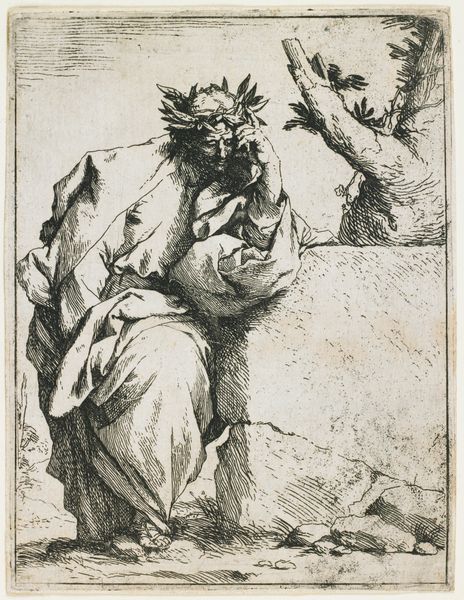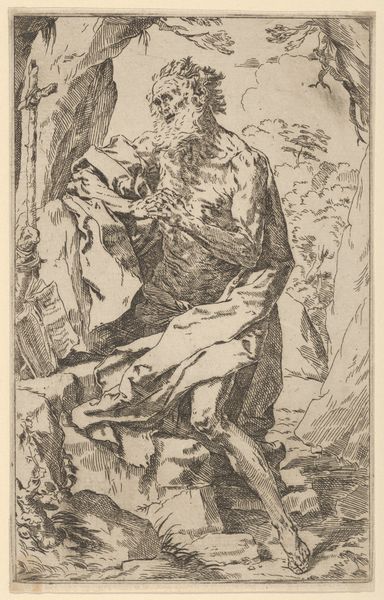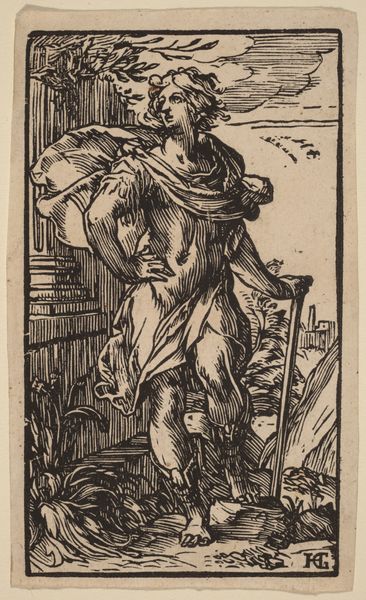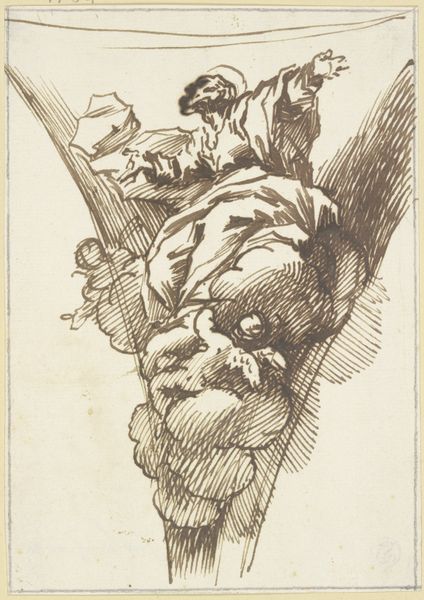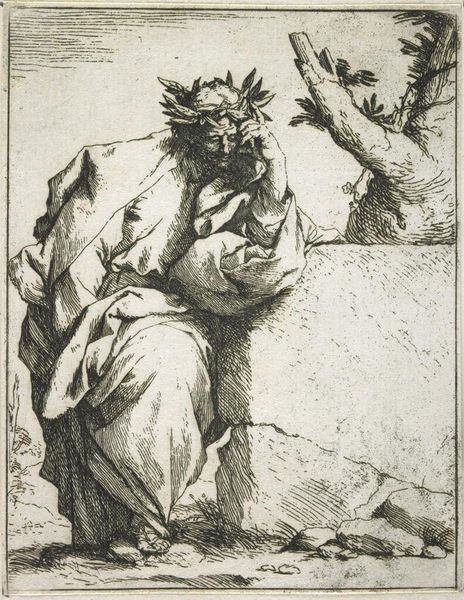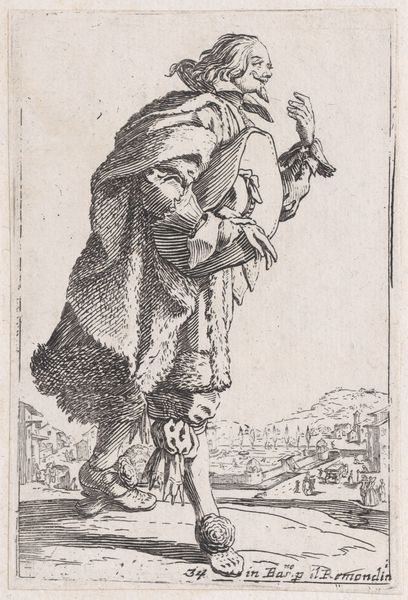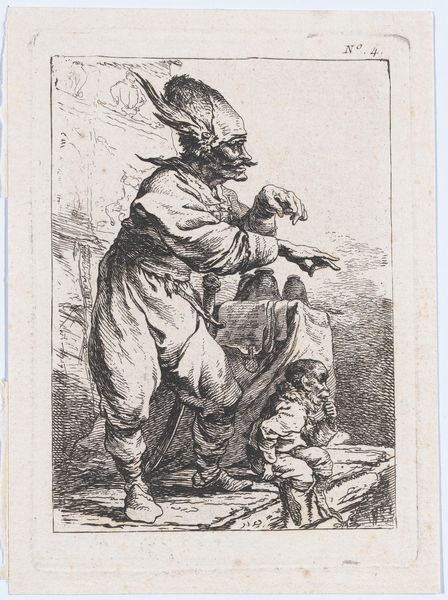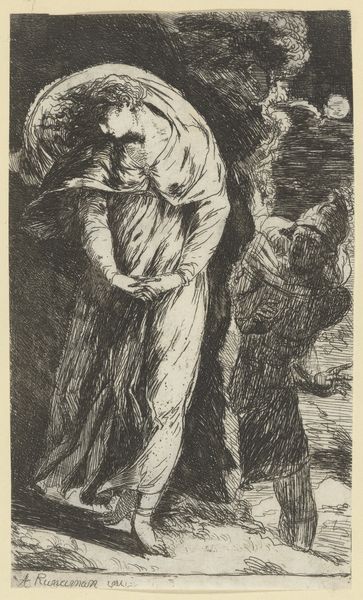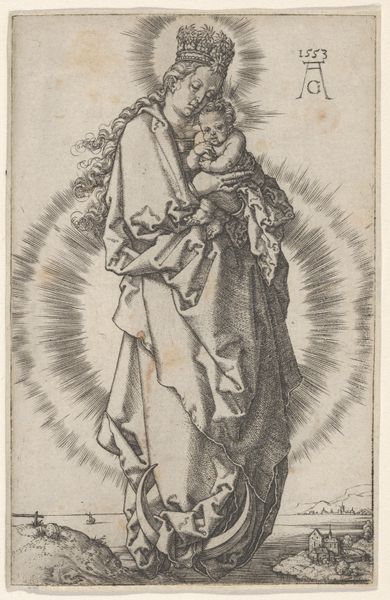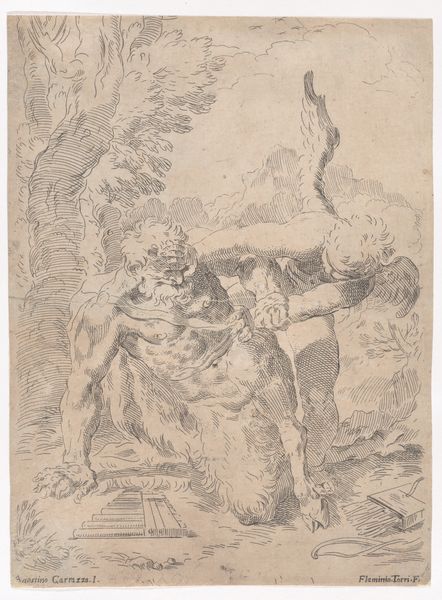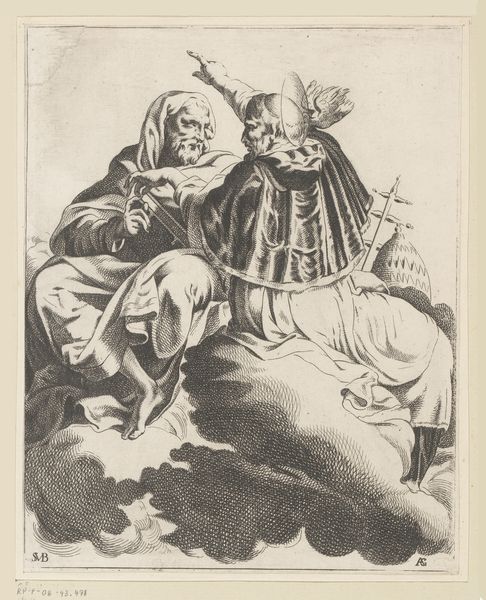
drawing, print, etching
#
portrait
#
drawing
#
baroque
#
ink painting
# print
#
etching
#
history-painting
Dimensions: Sheet: 6 1/4 × 4 3/4 in. (15.8 × 12 cm)
Copyright: Public Domain
Editor: So, this is "The Poet (copy in reverse)," an etching by Jusepe de Ribera, dating from somewhere between 1620 and 1685. The mood is undeniably melancholic. What’s your take on it? Curator: It's a powerful image. Ribera's portrayal offers an entry point to discussions about the artist's role in society, wouldn’t you say? This "poet," wreathed in laurel, embodies not just artistic creation but also a certain degree of social commentary, particularly within the context of 17th-century Europe. Notice his brow: burdened by the responsibility to speak truth, perhaps? Editor: That’s interesting. The social burden of the artist… How does that relate to the piece being a reversed copy? Does that say anything about authenticity versus reproduction, maybe? Curator: Exactly. Think about the implications of reproducibility during this period. Who had access to art, and what did that say about power? And what happens to the artist's original "intention" when the work is mediated through print and reversed in the process? Are we further distancing the 'poet' from the so-called 'truth' that artists should reflect and, if so, what does it reveal about anxieties surrounding artistic expression at the time? Editor: So it's not just about the image, but about who gets to see it, and how its message shifts along the way? Curator: Precisely. And it begs the question, doesn't it: how does power itself influence what narratives are told and immortalized through art? Editor: I never thought of a print carrying so much weight! I'm leaving this conversation rethinking not just Ribera's poet, but what art means for social change. Curator: And hopefully considering how our interpretation, like that etching, is itself a kind of re-writing!
Comments
No comments
Be the first to comment and join the conversation on the ultimate creative platform.
